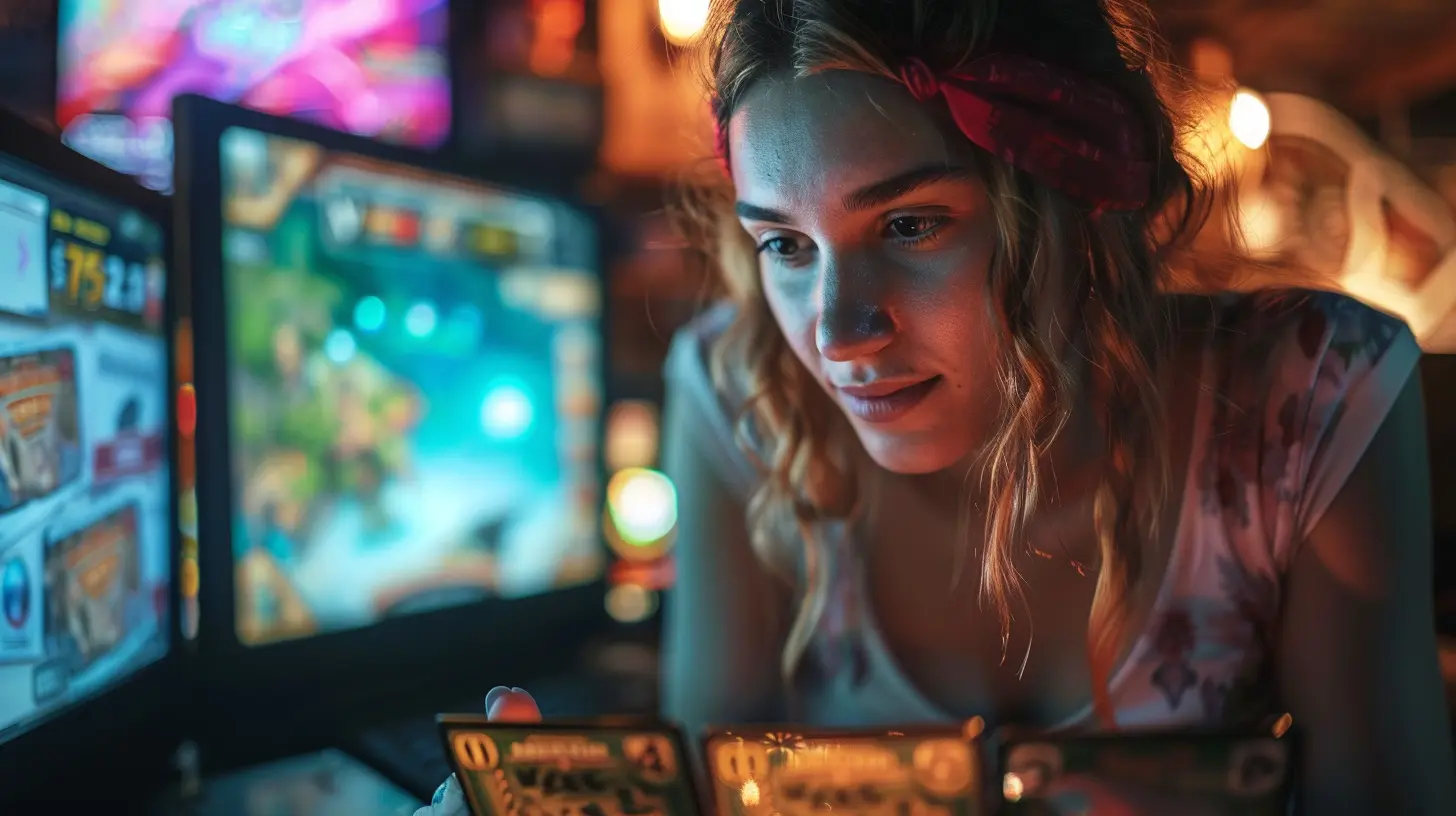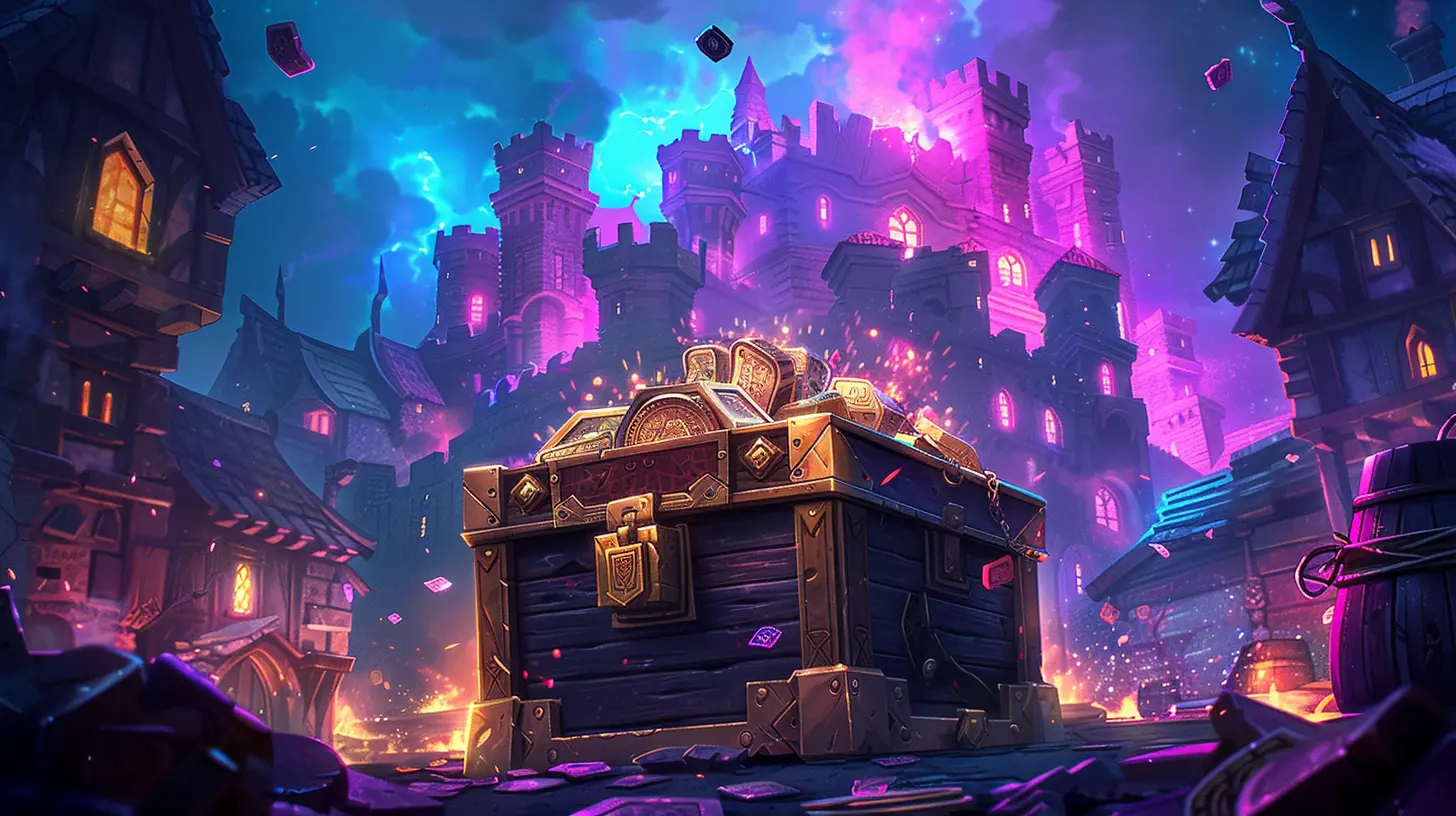The Connection Between Microtransactions and Player Identity
27 May 2025
Over the years, gaming has evolved into something much bigger than just staring at a screen and pressing buttons. Video games have become immersive worlds where players can live out fantasies, build empires, and—let’s be honest—show off a little. And what better way to showcase your unique identity in these virtual worlds than through microtransactions? Ah, yes, the love-it-or-hate-it feature that has transformed the gaming industry forever.
But wait—how did microtransactions tie themselves so intricately to player identity? What makes spending $10 on a shiny new skin feel so personal? Let’s dive into this fascinating topic and break it down.

What Are Microtransactions, Anyway?
Okay, before we go overboard, let’s get on the same page. Microtransactions—also known as in-game purchases—are small financial transactions where players buy virtual items, cosmetics, or upgrades directly inside a game. These range from purely aesthetic items, like character skins or weapon camos, to functional ones, like power-ups or extra lives.Some games have made microtransactions their bread and butter, especially free-to-play titles. Think about games like Fortnite, Apex Legends, or Call of Duty: Warzone. These games might not charge you a penny to start, but the premium skins, dances, or weapon blueprints? That’s where they get you.
Now, here’s where it gets interesting. These little purchases don’t just enhance gameplay—they often become a reflection of who we are (or who we want to be) in the virtual universe.

Identity in Gaming: More Than Just a Username
Let’s back up for a second. Why do people even care about their identities in games? Simple: games are no longer just games. They’re social spaces.When you walk into a room full of people, you express yourself through your clothes, your hairstyle, your posture—even the sneakers you’re rocking. Gaming works the same way! Your character, your avatar, your loadout—these are extensions of you. They’re how you present yourself to the community.
Multiplayer games, in particular, thrive on this concept. The guy with the golden sword skin or the girl with the rare limited-edition outfit instantly stands out. It’s like wearing couture in the middle of a crowded mall—it screams, “This is me, and I’m unique!”
The Psychology of Standing Out
Let’s face it: humans are wired to seek individuality, even within tribes. You might belong to a community of gamers, but deep down, you still want to scream, “I’m not just another player—I’m me!”Microtransactions tap directly into this psychological need. That exclusive skin or mount? It's not just pixels—it's a badge of honor. When others see it, it tells them you’re either skilled enough to earn it or willing to invest in your self-expression. Either way, it speaks volumes.

From Pay-to-Win to Pay-to-Be-Seen
If we rewind to the early days of microtransactions, they were often tied to gameplay advantages. Remember the outrage over pay-to-win mechanics? (I’m looking at you, Star Wars Battlefront II.)But more recently, the focus has shifted. Developers realized that players are more likely to spend money on cosmetics than competitive advantages. Why? Because people care deeply about how they look and what they represent in games. Appearing unique has become the new "winning."
Think about Fortnite and its ridiculous array of skins. They don’t offer any gameplay advantage. Yet millions of players shell out real money to dress their avatars as banana warriors, Marvel superheroes, or even musicians like Travis Scott. Why? Because it turns them into walking billboards of identity.
It’s Not Just About Vanity
Sure, some people might call this vain—buying a skin just to flex. But let’s not undersell the emotional connection players develop with their purchases. For many gamers, these items hold sentimental value. Maybe it’s the skin they wore when they finally clinched a victory royale. Or the limited-edition emote that reminds them of playing with friends during a specific season.These microtransactions are more than just cosmetic—they’re milestones, trophies, and memories rolled into one.

Communities and the Influence of Peer Pressure
Let’s talk about the social side of things. Gaming isn’t a solo affair anymore—it’s a massively social activity. And just like in real life, peer pressure sneaks its way into virtual worlds too.When everyone in your squad is rocking fiery red armor and you’re still running around in default beige, it’s hard not to feel out of place. That’s where microtransactions come in. It’s not just about looking cool—it’s about belonging.
Plus, in the age of live-streaming and YouTube gaming content, your identity isn’t just for your friends to see—it’s for the world. Gamers who stream or create content often invest heavily in personalization because their avatars become an extension of their brand. Think of it as digital branding for influencers.
The Economics of Identity
Of course, not everyone is thrilled about microtransactions, and for good reason. Critics argue that gaming companies are exploiting the human desire for identity by putting a hefty price tag on it. And they’re not wrong—those premium skins can cost as much as a full-blown game!But here’s the kicker: people are willing to pay. Why? Because in a world where everything feels mass-produced, we crave individuality—even if it costs us.
The Free-to-Play Model
Here’s an interesting twist: microtransactions have become the lifeblood of free-to-play games. Developers earn billions of dollars annually through this model. It’s essentially a trade-off—you get to play the game for free, but if you want to personalize your experience, you’ve got to cough up some cash.It’s like going to a free concert but having the option to upgrade your seat for a closer view. You don’t need to spend money—it’s entirely optional—but let’s be honest, the front-row seats always look tempting.
Where’s the Line?
Of course, not everything about microtransactions and identity is sunshine and rainbows. Some games take things too far, deliberately making free players feel like second-class citizens. Or worse, locking the best items behind outrageous paywalls, exploiting FOMO (fear of missing out).There’s also the ethical question: should games—even those targeted at kids—encourage spending money to “be yourself”? It’s a tricky line to walk, one that developers and regulators are constantly debating.
What’s Next for Microtransactions and Player Identity?
Let’s be real—microtransactions aren’t going anywhere. If anything, they’re only becoming more sophisticated. As gaming tech grows (hello, metaverse!), we’ll probably see even deeper layers of customization. Imagine full-blown NFT-style ownership of skins or accessories, ensuring your identity in-game is truly one of a kind.But with that comes greater responsibility. Developers need to strike a balance between fun customization and exploitative practices. After all, identity is personal. It shouldn’t come with strings attached.
Final Thoughts
At the end of the day, microtransactions have become a double-edged sword. On one hand, they allow us to express ourselves and carve out a unique place in virtual worlds. On the other, they can sometimes feel like a tax on individuality.Still, there’s no denying the connection between microtransactions and player identity runs deep. Whether you’re buying that flashy skin or rocking default gear, who you are in-game is entirely up to you—and that’s kind of beautiful, don’t you think?
all images in this post were generated using AI tools
Category:
MicrotransactionsAuthor:

Avril McDowney
Discussion
rate this article
3 comments
Kenzie Reynolds
This piece beautifully highlights the emotional ties players form with microtransactions, emphasizing how they shape identity in gaming communities. Great read!
June 14, 2025 at 4:06 PM

Avril McDowney
Thank you! I'm glad you enjoyed the piece and found it insightful. Player identity is indeed a fascinating aspect of gaming culture.
Mara McVicker
This article sheds light on a crucial aspect of modern gaming. Microtransactions often shape how players define their identity within games, sometimes creating a divide between those who spend and those who don’t. It's a thought-provoking reminder of how commerce can influence community and personal experiences in gaming.
June 5, 2025 at 2:42 AM

Avril McDowney
Thank you for your insightful comment! I'm glad you found the discussion on microtransactions and their impact on player identity thought-provoking. It's a complex issue that definitely affects community dynamics in gaming.
Ardent Clarke
This article offers valuable insights into the nuanced relationship between microtransactions and player identity. By exploring how purchasing choices reflect personal values and social connections, it highlights an important aspect of modern gaming culture. I appreciate the thoughtful analysis and look forward to seeing further discussions on this topic.
May 30, 2025 at 3:01 PM

Avril McDowney
Thank you for your insightful feedback! I'm glad you found the analysis valuable, and I appreciate your interest in further discussions on this important topic.



